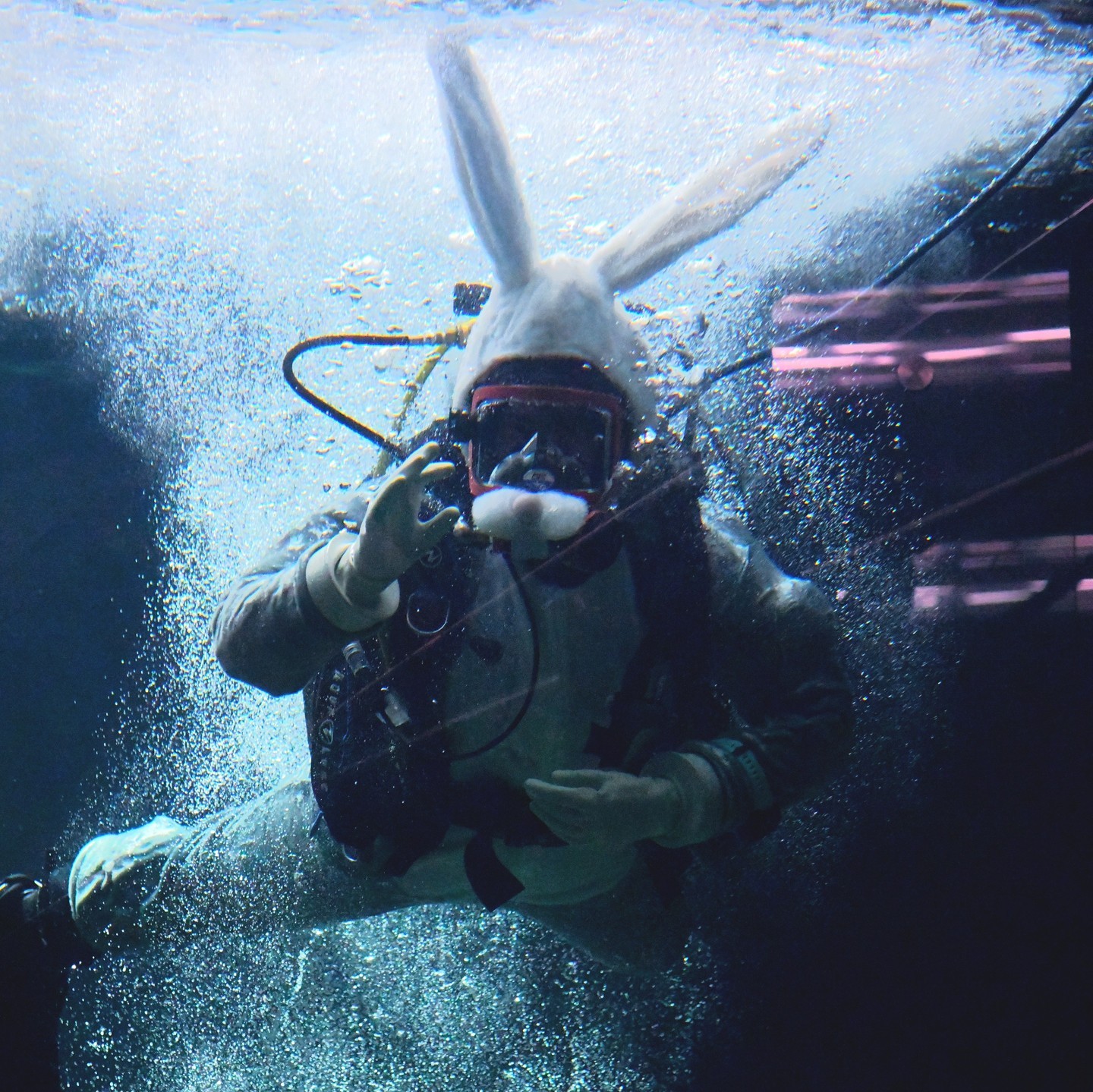– Exploring the educational potential of live animal exhibits like Scuba Bunny at Underwater Wild Coast.
– Understanding the challenges and strategies of zoo management in promoting wildlife conservation.
– Evaluating the impact of unique animal encounters on public awareness and interest in zoological matters.
With the opportunity to witness Scuba Bunny’s underwater escapades quickly coming to a close at the Underwater Wild Coast, visitors are gathering with excitement for their last chance to experience this engaging and educational exhibit. Scuba Bunny’s dive shows, scheduled at 11 am and 1 pm through the weekend up to Monday, offer a captivating glimpse into aquatic life and the complexities of animal behavior, encouraging a sense of wonder and a deeper appreciation for marine ecosystems.
Live animal exhibits such as these play a crucial role in zoos’ and aquariums’ educational missions. They serve as platforms for informing the public about animal habits, the importance of their habitats, and the pressing need for conservation efforts. Watching Scuba Bunny navigate the watery depths, children and adults alike are entertained but also subtly informed about the fragile nature of underwater environments and the species that inhabit them.
However, crafting such a compelling exhibit is no small feat. Zoo management teams work tirelessly to balance animal welfare with visitor engagement. Caring for animals like Scuba Bunny requires a team of experienced professionals who understand the psychology and physical needs of the animals in charge. This includes regulating their diet, ensuring suitable habitat conditions, and providing enrichment activities. Behind the scenes, veterinary staff monitor the health of the animals while trainers work to acclimate them to their roles in the exhibits without causing undue stress.
Introducing the public to unique species through exhibits can significantly influence perceptions and attitudes toward wildlife conservation. When spectators see Scuba Bunny’s playful antics, they engage emotionally, which may motivate them to learn more about marine life and potentially support conservation efforts. However, zoo management must strike a delicate balance, promoting educational content without sensationalizing the animals or trivializing the serious issues facing their wild counterparts.
Through these interactions, public awareness is heightened, and visitors are likely to share their experiences with friends and family, further spreading conservation messages. During these animal encounters, educational talks provided by zoo staff solidify the knowledge gained, linking personal experiences with broader environmental concerns. Still, these messages must be conveyed in an accessible language that resonates with a diverse audience without diluting the scientific accuracy or urgency of the conservation message.
The impact of such animal encounters can be profound. They educate and spark curiosity, leading people to explore additional information about the animals they’ve seen. This can result in a ripple effect, galvanizing grassroots support for conservation initiatives or even inspiring the next generation of zoologists, marine biologists, and environmental activists.
As the weekend approaches and the opportunity to visit Scuba Bunny at Underwater Wild Coast draws close, visitors are presented with more than just the chance to see an entertaining exhibit. They are afforded a glimpse into the underwater world, a chance to connect with nature and the inspiration to make more informed choices that may benefit the environment. The final dives of Scuba Bunny represent not only the culmination of an engaging exhibit but also the continuing journey of education, conservation, and the fostering of deep-seated respect for wildlife and the precious ecosystems they inhabit.
*****
Source Description
It’s your LAST CHANCE to see Scuba Bunny! Visit Underwater Wild Coast this weekend as Scuba Bunny hops in at 11 a.m. and 1 p.m., now through Monday!


